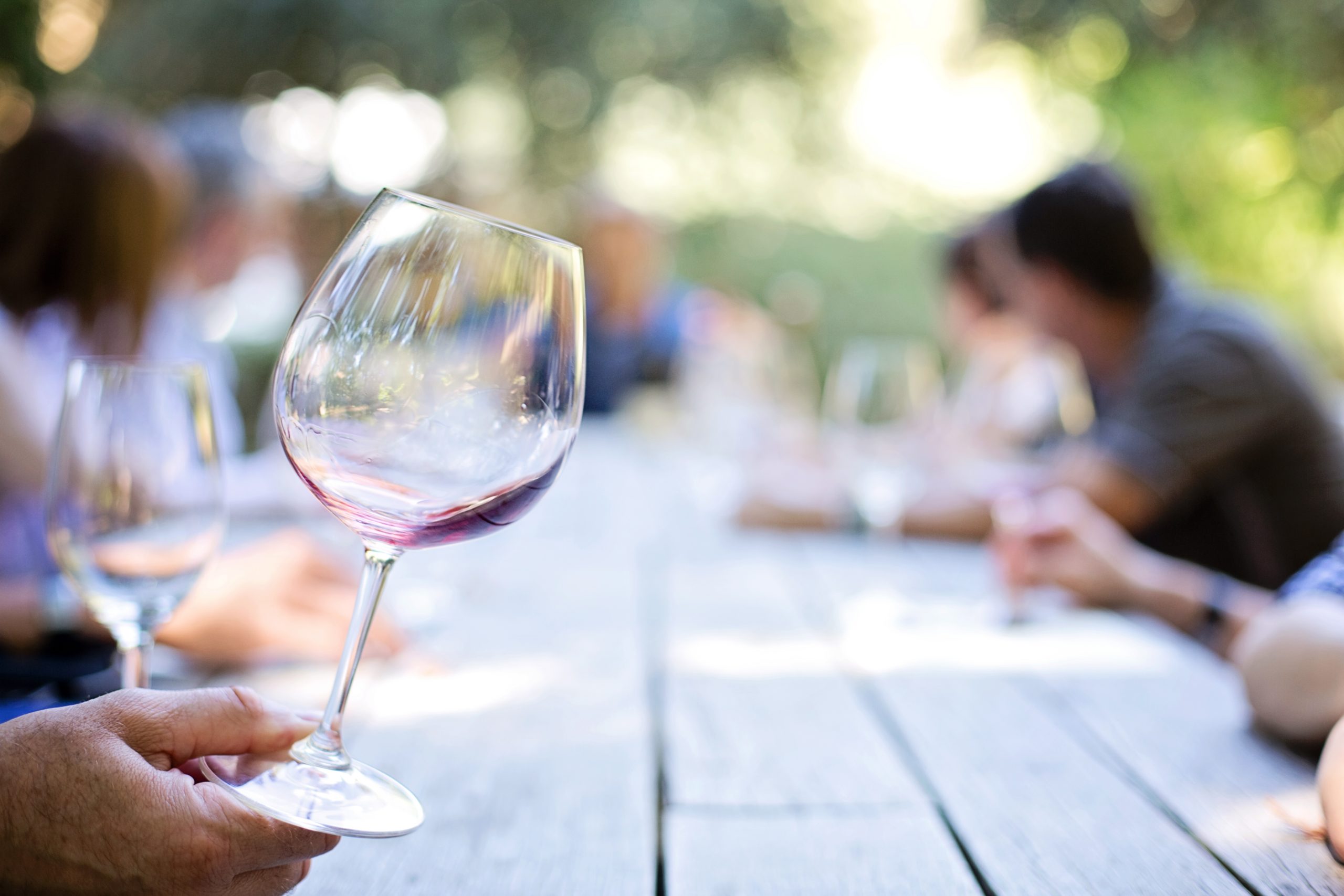[Image via Adelaida.com]
Like the pearl inside an oyster shell made from rugged, Central California terrain, Adelaida Vineyards & Winery is a treasure found amidst the peaks and valleys of the Santa Lucia mountain range. Except this pearl sparkles in shades of grape across 168 acres of sun-kissed vineyards.
For 35 years, Adelaida has been bottling Petit Sirahs and Pinots, Zinfandels, Cabernet Sauvignons and more, all the heart of Paso Robles, CA wine country. So when I had a chance to speak with Adelaida Winery and Vineyard Ambassador Glenn Mitton, I had to find out exactly what’s what at the historic winery making some pretty epic juice …
![[Image via Adeilaida.com]](https://littlewordstud.wpengine.com/wp-content/uploads/2016/10/paso-robles.jpg)
[Image via Adeilaida.com]
MELISSA: The history of Adelaida Vineyards & Winery, which dates back to 1964 when Dr. Stanley Hoffman planted the first Pinot Noir and Gamay Noir vines in the ground, is deeply rooted in Paso Robles’ wine country. How do the wines you produce reflect this storied past?
MITTON: Adelaida Vineyards & Winery was established in 1981 and became the custodian of the HMR Vineyard in 1994. Today we continue to farm the land, tend the vines and create a world class Pinot Noir from these hardy 52-year-old vines.
In 2015, Adelaida was named a Certified California Sustainable Winegrowing Winery & Vineyard (CCSW). From a wine enthusiast’s perspective, is there any difference in the taste of a sustainably made wine vs. one that was crafted the regular, old way?
Being sustainable certified is something we are very proud of. To us it shows that we are doing the very best we can to be environmentally friendly and conscious to the land and our community. Farming as naturally as we can with no chemical use in the vineyard will give us the finest quality and quantity of fruit on our vines, so the wine that is made is going to be as natural, flavorsome and true to its variety as possible.
![[Image via Adelaida.com]](https://littlewordstudio.com/wp-content/uploads/2016/10/adelaida-wines.jpg)
[Image via Adelaida.com]
Are sustainable wine-making practices the future of the wine industry?
These practices are only going to be the future for the wineries who feel it makes a difference and who are invested in the wellbeing of the land and the community.
As a Game of Thrones fan might say, “Winter is coming.” What’s the best wine to enjoy on a cold, wintry night?
I would say either our spicy, juicy Syrah Anna’s Estate Vineyard 2013 or the velvety, elegant Cabernet Sauvignon Signature Viking Estate Vineyard 2013.
You once brought Laura Werlin, James Beard Award-winning author to lead a Cheese and Wine Pairing University at Adelaida, so it’s pretty obvious your team respects this classic food-and-drink duo. Why do you think wine and cheese make such an irresistible pair?
Wine and cheese have a historic relationship. Cheese, as a favorable protein, screams out for white or red wine to help partner with it depending on the age of the cheese, the style and the origin.
And what’s your favorite wine and cheese pairing?
Personally, mine would be our Historic HMR Pinot Noir with Délice de Bourgogne. My second would be an aged Gouda with our Cabernet Sauvignon Signature Viking Vineyard.
![[Image via Adelaida.com]](https://littlewordstudio.com/wp-content/uploads/2016/10/adelaida-wine2.jpg)
[Image via Adelaida.com]
I read in an Adelaida blog post from a few years ago that “struggling vines make good wines,” which is pretty surprising to learn because I’d assume vibrant vines would produce the best wines. Why isn’t that the case?
[For this question, Adelaida Winemaker Jeremy Weintraub jumped in to respond]: Premium wineries take a different approach to farming grapes than do raisin processors and table grape producers. The simple answer is that the latter two farm principally for quantity (and cosmetics, in the case of table grapes), while wineries are looking for that ever elusive and ill-defined term “quality.” Vines are believed to make more flavorful wines when their vigor has been kept in check. The easiest way to understand this is to imagine a heavily laden vine, where clusters are buried under each other or under layers of foliage. That picture results in fruit that’s been deprived of sunlight, which, among other things, is key for synthesizing many of the chemicals that are responsible for color and flavor in grapes.Speaking of vines, your Wine Club Manager Annette Dennigmann once said in a Q&A posted to your site, “The fruit from older vines produce wines of greater depth and complexity than do their more youthful counterparts. The differences are not quantifiable. You simply know it when you taste it.” What is it about older vines that makes their fruit that much more irresistible?
A young vine is prone to produce a higher quantity of fruit when it reaches maturity, at about 10 years old. As the vine ages it will invariably produce less fruit, like vines 25 years and older. A well maintained, healthy vine of age will produce a reduced quantity but elevated quality if farmed properly.
![[Image via Adelaida.com]](https://littlewordstudio.com/wp-content/uploads/2016/10/adelaida-cellar.jpg)
[Image via Adelaida.com]
When describing your revamped wine labels, Elizabeth Van Steenwyk, Adelaida owner/author said, “The new label tells the story of Adelaida. Like a short story that takes you beyond the surface, it honors this special place and its history yet shows anticipation for new beginnings.” That’s a beautiful simile! Thinking about the variables in weather, the particular grapes you harvest, the topography of the vineyard land, the coloring of each grape … can wine itself, and not just the label, also be rightly compared to its own short story in a bottle?
Adelaida Vineyards & Winery has a wonderful history in Paso Robles and the central coast. One of the first 10 wineries to be established in 1981, it does have a well-documented history. The Van Steenwyk family has a much older history of living and farming in Paso Robles with the walnut ranches the family has owned since the very early ‘70s. The new labels reflect the view the family saw when they purchased the Hilltop Ranch and the other labels show respect to the great wines of Burgundy reflected in our HMR Vineyard wines. The Signature Series labels are graced with Elizabeth’s beautiful signature as she is a lifelong author and published her 71st book this year. It is also true that our wines have a separate story of each individual wine, grape and vineyard. Each vintage reflects the growing season, the soil and rainfall and how the wine was made and aged.


